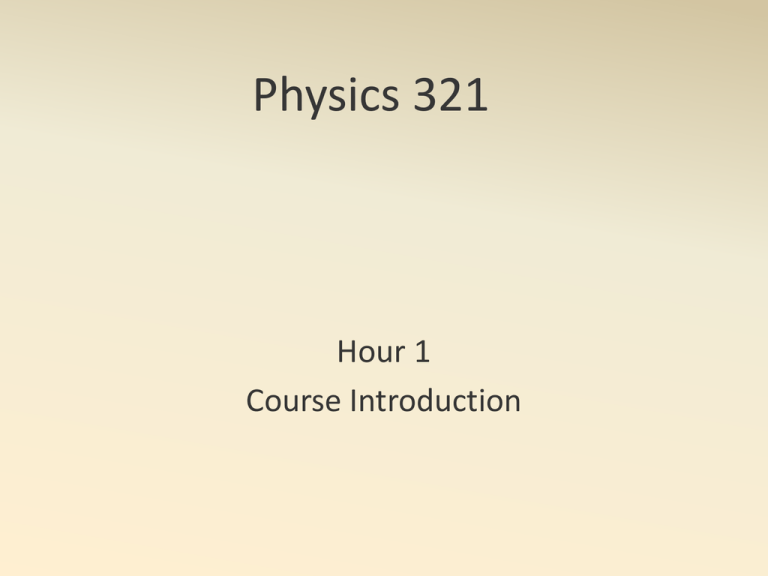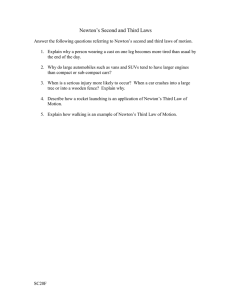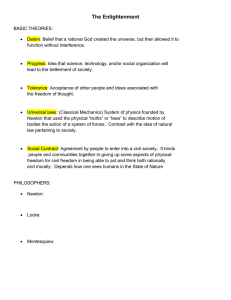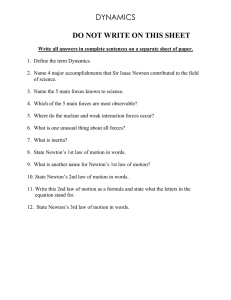Physics 321 Hour 1 Course Introduction
advertisement

Physics 321 Hour 1 Course Introduction Course Components • • • • • • • Course Outline Prerequisites: ODEs, Mathematica Reading: Due before lecture HW: Due MWF - see schedule on Learning Suite Take-home Tests: Due every other Thursday Midterm Exams: In the Testing Center Final Exam: In Class Course Components • • • • • Reading: 5% Homework: 10% Take-home Tests: 40% Midterms: 25% Final: 20% HW & Takehome Tests Physics 321 Hour 1 Newton’s Laws of Motion Before Newton What is the natural motion of an object? • Greeks – without force, motion stops • Kepler – straight lines (earth→heavens) • Galileo – circles (heavens →earth) • Descartes – matter and motion are conserved Before Newton How do we understand collisions? • Descartes – conservation of motion • Huygens – motion = mass x velocity • Leibniz – vis viva = mass x velocity2 Newton’s 0th Law The quantity of motion is the measure of the same, arising from the velocity and quantity of matter conjointly. = Huygen’s definition of motion Newton’s 1st Law Every body continues in its state of rest, or of uniform motion in a right line, unless it is compelled to change that state by forces impressed upon it. = Descartes’ idea of natural motion Newton’s 2nd Law The change of motion is proportional to the motive force impressed, and is made in the direction of the right line in which that force acts. = A way to measure/define force Newton’s 3rd Law To every action there is always an equal reaction; or, the mutual actions of two bodies upon each other are always equal, and directed to contrary parts. • Forces are binary • Momentum is conserved instant by instant • Forces add as vectors Newton’s Laws and Measurement What do we have to measure to verify/apply Newton’s laws of motion? What is mass, space, time? How have our ideas of mass, space and time changed since 1687? Do Newton’s Laws Work? How could we tell if forces are really are binary? Are they binary? Two examples: charges and a bat, Lorentz force What would be necessary for forces to be conserved instant by instant?





